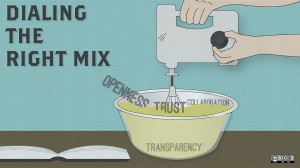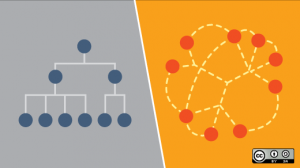Continuing with our exploration of how we can apply nature’s principles to our HR Strategy, we look at the third of Nature’s Principles proposed by Fritjof Capra in his book “The Hidden Connections: A Science for Sustainable Living“: Solar Energy
As I briefly mentioned in Human Resources, How can we add value?, we can draw a parallel between solar energy and employee engagement. Solar energy is the fuel used by most ecosystems; employee engagement is the fuel for the functioning of organizations.
Taking this a bit further, Henry Morris, PhD in “The Tri-Universe” provides us with another way to look at the dynamics within an organization when he defines the universe as follows:
“The created universe is actually a tri-universe of Space, Matter, and Time, each permeating and representing the whole. However, the universe is not partly composed of space, partly of matter, and partly of time (like, for example, the three sides of a triangle). A trinity is not a trio or a triad, but a tri-unity, with each part comprising the whole, yet all three required to make the whole. Thus, the universe is all Space, all Time, and all Matter (including energy as a form of matter); in fact, many scientists speak of it as a Space-Matter-Time continuum.”
Space can be considered from the perspective not only of where we operate, where we have offices, manufacturing plants, etc; but also from the perspective of what markets we serve, the niche for our products, etc.
Time is easy, there is past that we can learn from, present that we need to be fully aware of, and future that provides us with our vision.
Matter is what I want to focus on because it takes us back again to engagement. We can summarize the trinity of Matter as:
Matter = mass + energy + motion
Apart from our physical assets, the energy we use for our operations and the movement required to produce our output,
mass is our employees, energy is the effort they put into what they do, and motion is the flux of inputs and outputs through the processes we have defined within our operations.
So, no matter how we look at it, employee engagement is the true motor of the results our company achieves. Let us look at a definition of employee engagement I particularly like, given by the Human Capital Institute (HCI):
“The extent to which employees believe in what they do, feel valued for it, and are willing to spend their intellectual effort to make the organization successful.”
The reason why I like this definition is because it provides us with three (again “tri”) areas we need to focus on when developing our HR Strategy.
- Employees believe in what they do: There is no way employees will believe in what they do if they do not have a very clear view of how their work fits within the organization as a whole. This applies to every single employee, no matter where they work or what they do. The operator of a machine in one of our manufacturing plants needs to understand how what he is doing impacts the organization: what happens if quality is not met, what are our customers producing with the components we manufacture, how scrap is money going down the drain, etc. The list can go on quite a bit but you get the idea. It doesn’t matter if the employee is the Director of Marketing, the Receptionist, a Call Center Agent, a Software Developer or a Production Operator, everyone needs to know how what they do helps the organization achieve its goals.
- Employees feel valued for what they do: How do you show employees that you value them? There are hundreds of books on this topic. You need the basics first, competitive pay and benefits. But that is not what truly shows you value them. True value comes when you show appreciation for their efforts, when you keep them communicated of what is going on in the rest of the organization, when you provide an environment where they not only have what they need to do their work but, more importantly, they know that they can express their opinions and their ideas are considered. We show we value our employees when we make sure that the leader of each group has the skills to be able to create an environment of trust and enthusiasm, where employees feel they are part of a “we” and would never refer to the company as “they”.
- Employees spend their intellectual effort to make the organization successful: If employees believe in what they do and they feel valued for what they do, the probability of them really placing their effort in what will make the organization successful will follow. We need to make sure that the organization does not present barriers, too much bureaucracy that prevents employees from doing their best, too many restrictive processes or having to request authorization for things that should be within their area of responsibility. All these things can quickly kill employee engagement because it restricts their ability to do what they know would be best.
So when you are looking at the Business Strategy to start defining your HR Strategy, remember: Energy = Engagement, the ingredient that will make things happen. And don’t forget that, as with the Tri-Universe, to have employee engagement you need to make sure the three components of the definition are present.



